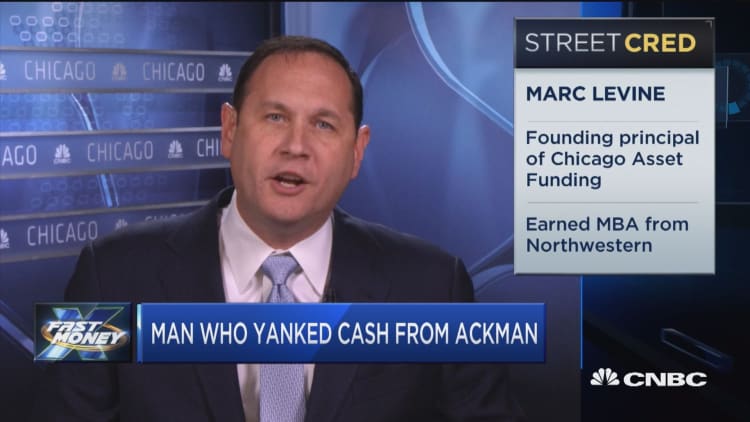
The hedge fund industry is seeing more than an outflow of investor cash: The number of funds actually shutting their doors also has hit a post-financial crisis high.
As investors pulled $70.1 billion in 2016, some 1,057 funds closed their doors, beating the 1,023 liquidations in 2009 and falling just shy of the record 1,471 in 2008, according to industry monitor Hedge Fund Research. Some industry watchers have put the withdrawals closer to $100 billion.
The shutdown total was 10.4 percent worse than 2015, bringing the total number of remaining hedge funds to 9,893, according to HFRI's estimates.
"The market is oversaturated," said Don Steinbrugge, managing partner at Agecroft Partners, a hedge fund marketing firm. "It's highly competitive, and for a hedge fund manager to raise money they can't have any flaws."
Investor withdrawals and fund liquidations came even as the industry's total assets surpassed $3 trillion for the time, owing to a 5.47 percent overall return as measured by the HFRI Fund Weighted Composite Index.
Though that fell short of the nearly 12 percent return from the — including dividends — it topped the 3.2 percent gain in another benchmark, the Barclays Capital Government/Credit Bond Index.
The HFRI Index is up again in 2017, gaining 2.23 percent through February against the S&P 500's return of a little less than 6 percent during the same period. But investors have grown impatient with the industry's below-market returns as managers charge substantial fees for their work.
In response, the industry's fee structure continues to move away from the traditional 2-and-20 model — the practice of charging clients 2 percent of their assets plus 20 percent of their returns.
Average fees declined again in 2016, with the norm now 1.33 percent of assets, down from 1.6 percent in 2015, and 17.71 percent on returns, a nudge lower from the 17.75 percent the previous year.
"The hedge fund industry fee structure continues the process of evolving to meet increased investor demands, as well as a persistently low, albeit increasing, level of interest rates," HFR President Kenneth J. Heinz said in a statement. "Continuation of the process of macroeconomic normalization is likely to drive strong performance across a wide range of strategies in 2017."
For investors, the key is selecting the right manager.
The top 10 percent had an average gain of 32.7 percent for 2016, a sharp increase from 20.3 percent a year ago, while the bottom tier saw average declines of 15.5 percent, which was still better than the 25.1 percent loss that group turned in in 2015, according to HFRI.
The multiple dynamics have forced some managers to get more creative. Smaller managers in particular — those with less than $100 million in assets — have been offering "founder shares" that carry fees closer to a 1-and-10 setup.
"If you're a hedge fund manager and you've had a significant draw-down in performance or some type of issue with service providers, or you can't clearly articulate what your investment process is, it's very difficult to raise money," Steinbrugge said. "Because the bar has been raised to get money, you're going to see a lot of people give up."



